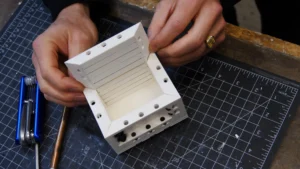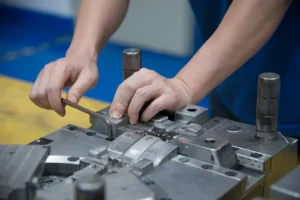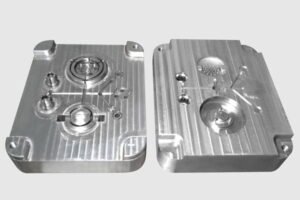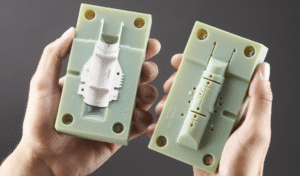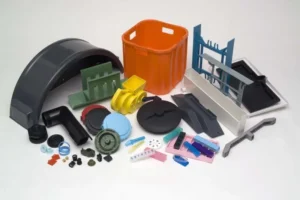Introduction
In today’s fast-paced manufacturing world, blow molding has emerged as a critical technique in the packaging industry. Blow molds are used to produce an array of products, from plastic bottles to containers, that are essential for many industries, including food and beverage, cosmetics, pharmaceuticals, and more. The versatility of blow molds lies in their ability to create lightweight yet durable packaging solutions that are cost-effective and efficient.
This article delves into the role of blow molds in modern packaging, exploring their process, advantages, applications, and impact on industries worldwide. By the end of this article, you’ll understand why blow molds have become indispensable in the production of packaging items that meet both consumer demands and environmental considerations.
What are Blow Molds?
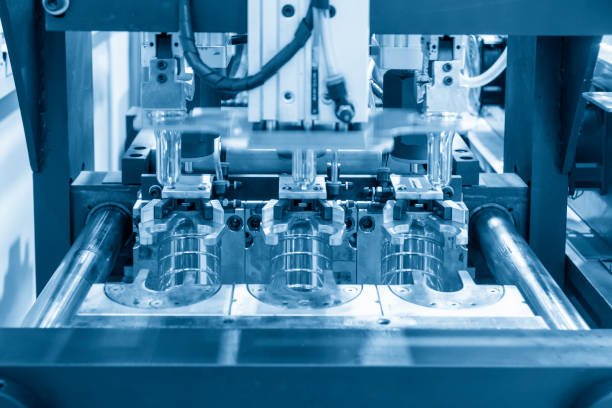
Blow molding is a manufacturing process used to create hollow plastic parts, typically for packaging. The process involves heating a plastic material, usually polyethylene, polypropylene, or PET, until it becomes soft and pliable. The material is then formed into a mold and air is blown into it, creating the desired shape.
Blow molds are the molds used in this process. They are designed to shape the molten plastic into the exact specifications needed for packaging products. Unlike injection molding, which is used for solid parts, blow molding is designed specifically for hollow structures, such as bottles, containers, and other types of packaging.
The Blow Molding Process
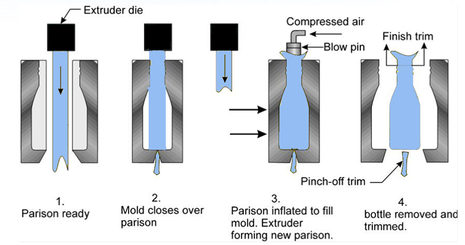
The blow molding process can be divided into three primary types:
- Extrusion Blow Molding: In this method, a tube of molten plastic is extruded into a mold. Air is then blown into the tube, forcing it to expand and take the shape of the mold. This is the most common process used for producing hollow packaging products like bottles.
- Injection Blow Molding: This process begins with injecting molten plastic into a mold to create a preform, which is a small, tube-like shape. The preform is then placed in a second mold, where air is blown into it to expand it into the final packaging product.
- Stretch Blow Molding: This method is typically used for making bottles and containers, especially those requiring a high degree of strength. It involves stretching the preform vertically before air is blown into it, creating a thin, strong wall.
Each of these methods has its own advantages, and the choice of which to use depends on the product’s specific requirements, including its shape, strength, and material.
Key Advantages of Blow Molding
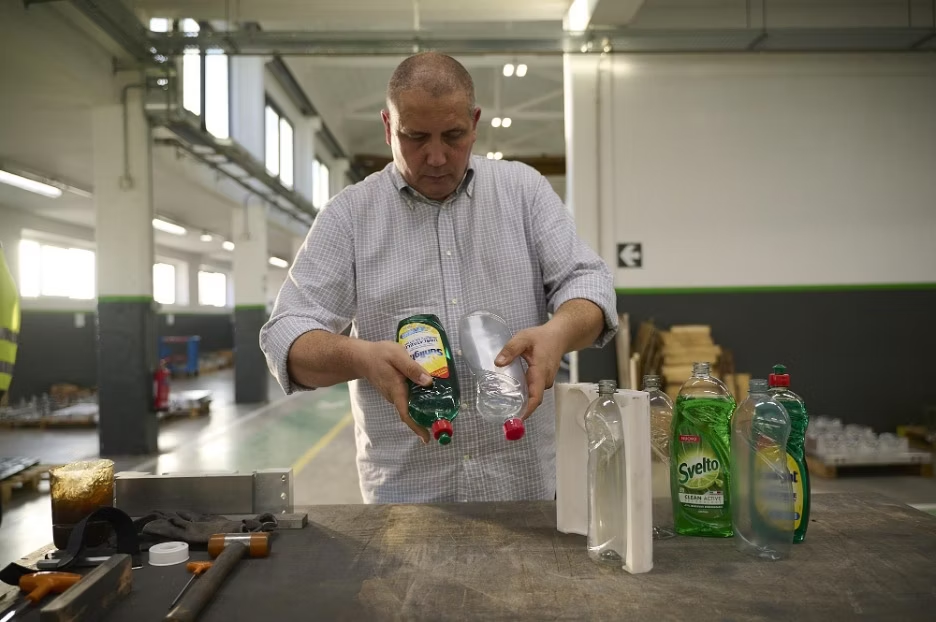
Blow molding has revolutionized the packaging industry due to its many advantages, including:
- Cost-Effectiveness: Blow molding is a highly efficient manufacturing process that reduces production costs. The ability to produce large quantities of products quickly, with minimal material waste, makes it a cost-effective option for packaging companies.
- Lightweight Design: Blow-molded products are typically lightweight yet durable. This is crucial in packaging, especially for industries like food and beverage, where lighter packaging can reduce shipping costs and increase sustainability.
- Versatility in Design: Blow molds can be customized to create complex shapes and sizes. Whether it’s a simple bottle or a uniquely shaped container, blow molds offer flexibility in design that is difficult to achieve with other manufacturing methods.
- High Production Speed: The blow molding process is fast, which makes it ideal for mass production. For packaging companies, the ability to produce a large number of items quickly and efficiently is essential for meeting high demand.
- Durability and Strength: Blow-molded packaging products are strong and resistant to wear and tear. This durability ensures that packaging materials protect their contents during transportation and storage.
Applications of Blow Molds in Various Industries
Blow molds are widely used across several industries for a variety of applications. Some of the most common include:
- Food and Beverage Packaging: Blow molds are extensively used in the production of plastic bottles for beverages such as water, soft drinks, juices, and dairy products. The durability and lightweight nature of blow-molded bottles make them ideal for the food and beverage sector.
- Cosmetics and Personal Care: Blow molds are used to create packaging for cosmetics, shampoos, lotions, and other personal care products. The ability to produce containers in various shapes, colors, and sizes is essential in this industry, where branding and consumer appeal are critical.
- Pharmaceuticals: Blow-molded containers are used in the pharmaceutical industry for packaging medications, ointments, and syrups. Blow molds provide a way to create sterile, durable, and precise containers that ensure the safety and quality of the products inside.
- Household Goods: Blow molds are used to manufacture plastic containers for household products, including cleaning agents, detergents, and various types of storage containers. Their durability and ease of use make them suitable for household packaging solutions.
- Automotive Industry: Blow molding is also used in the automotive sector for creating parts such as air ducts, fuel tanks, and containers for various automotive fluids. The lightweight yet sturdy nature of blow-molded parts makes them an excellent choice for reducing vehicle weight and improving fuel efficiency.
The Impact of Blow Molding on Sustainability
As sustainability becomes a growing concern in the packaging industry, blow molding plays a significant role in reducing environmental impact. The lightweight nature of blow-molded products means less material is required, which in turn reduces energy consumption and transportation costs. Additionally, many blow-molded products are recyclable, contributing to a more sustainable packaging ecosystem.
Manufacturers are also exploring the use of biodegradable and recyclable materials in the blow molding process. The adoption of eco-friendly materials and the ability to produce lightweight, durable products makes blow molding an attractive option for companies aiming to reduce their carbon footprint.
Future Trends in Blow Molding
The blow molding industry is constantly evolving, with new technologies and innovations shaping its future. Some of the key trends include:
- Increased Automation: As automation technologies improve, blow molding machines are becoming faster and more efficient, reducing human error and increasing production speed.
- Use of Sustainable Materials: As mentioned earlier, the demand for eco-friendly packaging is on the rise. Blow molding manufacturers are increasingly focusing on sustainable materials, including biodegradable plastics and recycled content.
- Smart Manufacturing: The integration of sensors and Internet of Things (IoT) technologies into blow molding processes allows for greater monitoring and control, improving efficiency and reducing waste.
- Customization and Personalization: Consumers are increasingly seeking unique and personalized packaging. Blow molding manufacturers are responding by offering greater flexibility in design, allowing for the creation of customized packaging solutions that meet individual brand requirements.
Conclusion
Blow molding has become an indispensable process in the packaging industry, offering manufacturers a versatile, cost-effective, and sustainable solution for producing high-quality packaging products. From food and beverage packaging to cosmetics and pharmaceuticals, the applications of blow molds are vast and varied. As the demand for efficient and eco-friendly packaging grows, the role of blow molding in shaping the future of packaging will only continue to expand.
By understanding the benefits, applications, and future trends of blow molding, businesses can better leverage this process to meet consumer expectations and stay ahead of the competition. Whether you’re a manufacturer looking to enhance production or a company striving to create unique packaging solutions, blow molds offer the ideal balance of innovation, precision, and sustainability.
Frequently Asked Questions (FAQ)
- What is blow molding?
Blow molding is a manufacturing process used to produce hollow plastic parts by inflating a molten plastic tube inside a mold. This process is primarily used for making bottles, containers, and other packaging products. - What are the advantages of blow molding?
Blow molding offers several advantages, including cost-effectiveness, lightweight design, versatility in product shape and size, high production speed, and durability. - What industries use blow molds?
Blow molds are used in a variety of industries, including food and beverage, cosmetics, pharmaceuticals, household goods, and automotive manufacturing. - How does blow molding contribute to sustainability?
Blow molding helps reduce environmental impact by producing lightweight products that require less material and energy to transport. Additionally, many blow-molded products are recyclable. - What are the future trends in blow molding?
Future trends in blow molding include increased automation, the use of sustainable materials, smart manufacturing, and customization and personalization of packaging products.
Sources:
- “Blow Molding: A Comprehensive Guide.” Plastics Today.
- “Packaging Technology and Manufacturing.” Journal of Packaging Science.
- “Sustainability in Blow Molding.” Environmental Packaging News.

